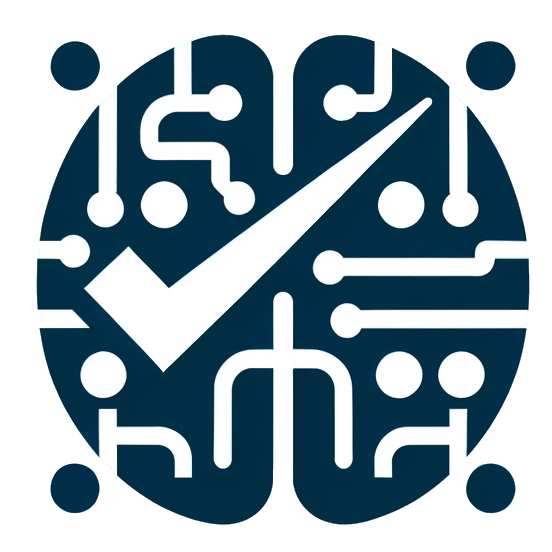Artificial Intelligence (AI) and Machine Learning (ML) are increasingly integrated into modern software products, introducing new challenges for Quality Assurance (QA) teams. Ensuring the reliability and performance of AI-driven applications requires innovative approaches to testing and validation. One such innovation is the Model Context Protocol (MCP), an open standard designed to seamlessly connect AI models with external data sources and tools. This guide aims to provide software testing teams with an in-depth understanding of MCP, its significance, implementation strategies, and best practices for testing MCP-integrated systems.
What is the Model Context Protocol (MCP)?
MCP is an open standard that facilitates secure, two-way communication between AI models and external data sources. Traditionally, integrating an AI model with various data sources required custom code or APIs, leading to fragmented and maintenance-intensive solutions. MCP addresses this challenge by providing a universal protocol that standardizes these connections, akin to how USB-C serves as a universal connector for hardware devices. This standardization simplifies the integration process, enabling AI applications to interact with diverse data sources through a consistent interface.

Key Features of MCP:
- Open Standard: MCP is openly published and designed for broad adoption, encouraging a community-driven ecosystem.
- Two-Way Communication: It enables AI applications to request information from MCP-connected data sources and receive context/data in return, ensuring models have the necessary context for accurate processing.
- Consistent Context Management: MCP maintains state and important information throughout a model’s operation, preventing context loss and ensuring output quality.
Importance of MCP in AI/ML Development
Integrating MCP into AI/ML development offers several advantages:
- Standardized Integration: MCP replaces custom adapters with a standard protocol, resulting in uniform behavior across different integrations. This standardization simplifies development and testing processes.
- Enhanced Model Performance: By providing models with timely access to relevant data, MCP enhances the relevance and accuracy of AI outputs, leading to improved application performance.
- Scalability: MCP’s universal approach allows organizations to scale AI integrations efficiently, connecting multiple data sources without the need for extensive custom development.
Implementing MCP in Software Systems
Implementing MCP involves several key steps:
- Setting Up MCP Servers: Developers create MCP servers that expose tools, resources, and prompts via a standard API to AI models. These servers act as bridges between AI applications and external data sources.
- Developing MCP Clients: Within the host application, MCP clients manage connections to specific MCP servers, facilitating communication between the AI model and external systems.
- Establishing Communication: MCP clients and servers communicate through standardized protocols, such as JSON-RPC 2.0, ensuring consistent and reliable data exchange.
- Capability Negotiation: Clients and servers negotiate supported features and protocol versions during the initial handshake, ensuring compatibility and optimal functionality.
Testing Strategies for MCP-Integrated Systems

QA teams play a crucial role in validating MCP-integrated systems. Effective testing strategies include:
- Interface Testing: Verify that MCP clients and servers communicate correctly, adhering to protocol specifications and handling data exchanges as expected.
- Security Testing: Assess the implementation of authentication and authorization mechanisms to ensure secure data access and prevent unauthorized interactions.
- Performance Testing: Evaluate the responsiveness and stability of MCP integrations under various load conditions to identify potential bottlenecks.
- Context Management Validation: Ensure that the AI model maintains context accurately throughout interactions, preventing context loss and ensuring consistent outputs.
Best Practices for QA Teams
To effectively test MCP-integrated systems, QA teams should:
- Understand MCP Specifications: Familiarize themselves with MCP’s architecture, components, and communication protocols to design relevant test cases.
- Collaborate with Development Teams: Work closely with developers to understand the specific MCP implementations and identify areas requiring focused testing.
- Utilize Testing Tools: Leverage tools that support MCP testing to automate and streamline the validation process.
- Stay Updated: Keep abreast of MCP developments and updates to ensure testing strategies remain relevant and effective.
Challenges in Testing MCP-Integrated Systems
Testing MCP-integrated systems presents unique challenges:
- Complex Interactions: The dynamic nature of AI models interacting with multiple data sources can lead to complex scenarios that are challenging to predict and test.
- Security Concerns: Ensuring secure data exchanges between AI models and external systems requires rigorous testing of authentication and authorization mechanisms.
- Performance Variability: The performance of MCP integrations may vary depending on the responsiveness of external data sources, necessitating comprehensive performance testing.
References
https://testcollab.com/blog/model-context-protocol-mcp-a-guide-for-qa-teams?utm_source=chatgpt.com
https://www.keywordsai.co/blog/introduction-to-mcp?utm_source=chatgpt.com
https://ai2sql.io/model-context-protocol-ai2sql?utm_source=chatgpt.com
https://tldv.io/blog/model-context-protocol/?utm_source=chatgpt.com


